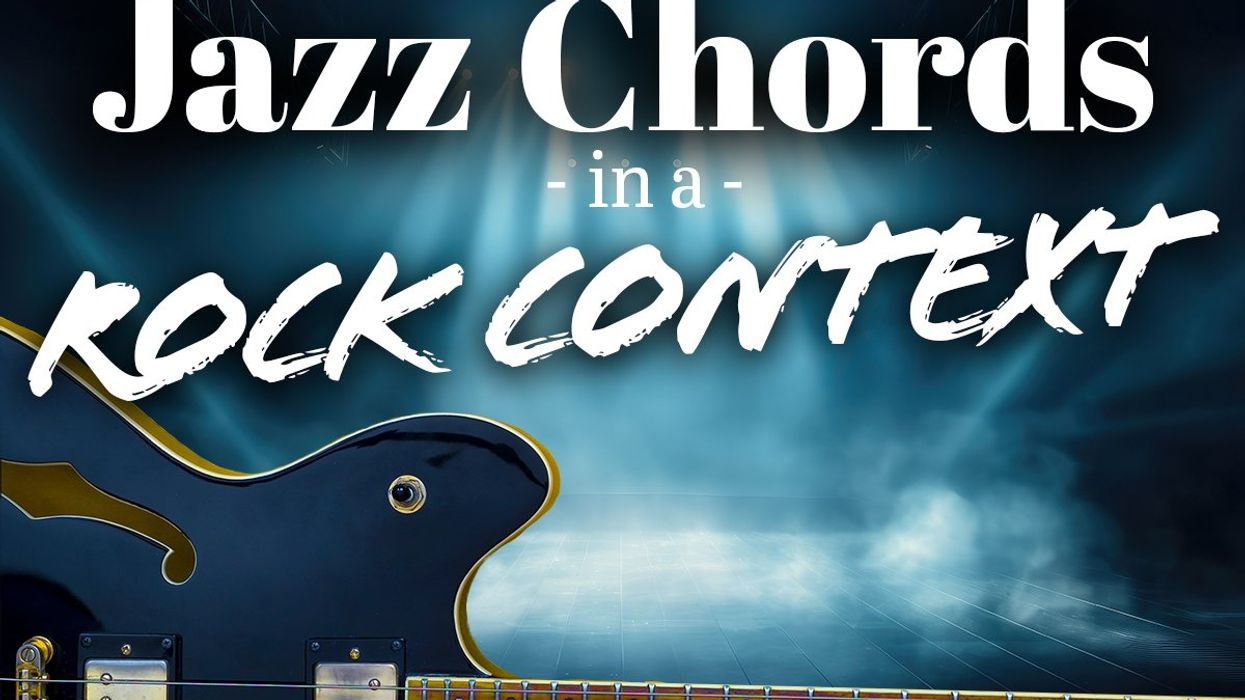Chops: Intermediate
Theory: Advanced
Lesson Overview:
• Develop soloing strategies for V-I cadences.
• Learn about chord extensions and alterations.
• Understand how to incorporate the Super Locrian scale.
Click here to download MP3s and a printable PDF of this lesson's notation.
This month you’re really going to reap the rewards of any time you put into my last lesson on dominant 7 arpeggios shapes and the CAGED system, as we’re going to move on to altered sounds and the V-I resolution.
There was a little confusion last month from some readers who (rightly so) pointed out that the chord progression we looked at wasn’t ever going to come up in the blues. It’s really important to understand that while the progression will probably never come up in full, picking any two measures of the progression gives you a V-I movement which is the absolute pivotal harmonic movement in all Western music (it crops up twice in a 12-bar basic blues and as many as 12 times in a bebop-influenced blues). If we were to take four consecutive chords you’d have the B section of "I’ve Got Rhythm" or any "rhythm changes" tune (sometimes referred to as the bebop bridge).
In the most basic form, 99 percent of all music boils down to tension and resolution. As a real simple example of this, if you play the chords C–F–Dm–G–Am you’ll find that the music doesn’t sound finished, you’re waiting for it to continue. That’s because I’ve ended it with an interrupted cadence, the V-VIm movement which could be likened to a comma in language. If I told you to repeat the progression but instead end on a C (C–F–Dm–G–C) suddenly the song feels complete because we’ve gone from the V chord (G, built from the 5th degree of the C major scale) to the I chord. This is known as a perfect cadence and is the strongest form of resolution in music. Even just the root movement of the V to the I carries enough weight that it remains strong through hundreds of years of culture.
When we pad out the harmony to 7th chords, in the key of C we would have Cmaj7–Dm7–Em7–Fmaj7–G7–Am7–Bm7b5. These chords obviously sound a little more complex than the previous triad harmony, but the rules established are still present. Cmaj7, Fmaj7, Dm7, G7, and Am7 still sound unfinished, and ending on the Cmaj7 gives us a sense of completion. What we have now is a dominant 7 chord, which naturally occurs on the 5th degree of the scale. This chord contains some real tension that wants to be resolved—even though we may not hear it that way, after listening to blues-influenced music for a century. Specifically there’s a diminished fifth interval between the 3 and b7 of the chord. When the major 3 raises a half-step and the lowered 7th drops a half-step, the chord resolves perfectly to the tonic C major chord.
The way we can take this concept a little “beyond” is to say to ourselves, "Okay, G7 to C sounds good because of tension and resolution, so what happens if I add even more tension to the equation?” The result is the altered chord.
At this stage, we’re not going to worry about correct extensions on secondary dominants, were just going to add a tension for effect. The four alterations at our disposal are the b5, #5, b9, and #9, and if we add any of them to our dominant 7 chord we’re going to create some real color. There really is a world of difference between Em7–A7–Dmaj7 and Em7–A7#5–Dmaj7. Give it a try!
So how do we use this altered sound in a blues context? Right now you may be thinking, “Levi, when I play blues, I don’t ever play a 7#5 chord.” The answer is simple: When moving from one chord to another, if it’s a dominant 7 moving up a 4th (or down a 5th), we can alter that chord—or pretend it’s altered. A great example of this in a blues would be measure four moving to measure five. In the key of A, we’d normally have four measures of A7 before moving to the IV chord (D7) in measure five. If we play the chord as A7 for three measures, but then alter it in the fourth measure to prepare for the resolution to D7, we’ll have a slightly more jazz-influenced blues.
Now that’s a lot of theory and we’re running out of space, so lets move on to how this can help us solo with a little more sophistication. The reference track at this point is always Robben Ford’s “Help The Poor.” It’s a flawless example of this concept in action because this minor blues in D features an A7#5 (give it a listen, it’s hard to miss) and during Robben’s two-chorus solo, he first chooses to ignore the chord, but on the repeat he opts to outline it with a fantastic altered lick that still grabs me every time I hear it (2:54).
If we include the four alterations when playing a dominant 7 chord, we’d get: root–b9–#9–3–b5–#5–b7. Or (in A) A–Bb–C–C#–Eb–F–G which actually contains all of the notes of a Bb melodic minor scale. So if you want to cheat, we have a few options:
- Learn the A altered (also known as the Super Locrian) scale (recommended).
- Play a melodic minor scale a half-step higher than the root of our chord.
- Play the Lydian dominant scale based on the b5 of the chord.
- Play a dominant 7 arpeggio a b5 higher than the root, which gives you a 7b5b9 sound.
Now to capitalize on the skills we covered last month [“12 Keys, 5 Shapes, and the Blues”], I’m going to give you five licks, one starting in each position of the CAGED system. Each one will resolve to the closest chord shape for the IV chord. If you missed last month’s lesson, you’re really going to want to put some time into that because what you’ll find is that when you learn to resolve smoothly, you can actually play any old nonsense on this tension and resolution idea. It doesn’t work the other way round though—the best altered lick in the world is a waste of notes if you don’t properly resolve the tension when the chord changes.
Fig. 1 starts in the first position of the CAGED system over A7 and combines the Mixolydian (A–B–C#–D–E–F#–G) and blues scale (A–C–D–Eb–E–G) before playing an A Super Locrian (A–Bb–C–C#–Eb–F–G) lick resolving to a D7 sound.
Fig. 2 begins with an A minor pentatonic (A–C–D–E–G) sound over the A7 chord before resolving to a D7 sound, via a sneaky little Super Locrian run.
We take advantage of the B.B King “blues box” in Fig. 3. It fits very nicely in the third CAGED position. We’re creating a motif using the root and 6, and then bending to the 3 before playing a nice country-flavored lick (yes, that’s one we’ve played in a previous lesson) and then finally moving into an arpeggio idea outlining an Eb7. Remember that playing a dominant 7 arpeggio from the b5 will give us an A7b5b9 sound. This phrase resolves to the first position of CAGED which is probably the reason I like third position so much—the resolution is very easy to visualize and make musical statements with.
Beginning in the fourth position of CAGED, we blend major and minor sounds in Fig. 4. We then use a Super Locrian idea that’s focused around an augmented triad (Db–F–A) that’s found in the Super Locrian scale.
Our last lick (Fig. 5) is a bluesy bop number starting in the fifth position of CAGED with a simple scalar idea resolving to the a D7 arpeggio.
Finally, check out the backing track in Fig. 6. It covers the first four measures of a blues in A and will give you plenty of room to explore all the sounds we discussed in this lesson.
Obviously I’ve only glanced over Super Locrian fingerings because the goals right now are to drill down into the sound, understand the purpose of the Super Locrian scale, and harness it to the chord changes we learned last month. When I catch up with you next time, I’ll show you all the fingerings for the Super Locrian scale, some tricks to get it in your playing, and some great exercises you can use to practice it. See you then!
 Levi Clay
Levi ClayLevi Clay is a London-based guitar player, teacher, and transcriber. His unique approach to learning keeps him in constant demand from students the world over, and his expertise as a transcriber has introduced his work to a whole new audience. For more information, check out leviclay.com.
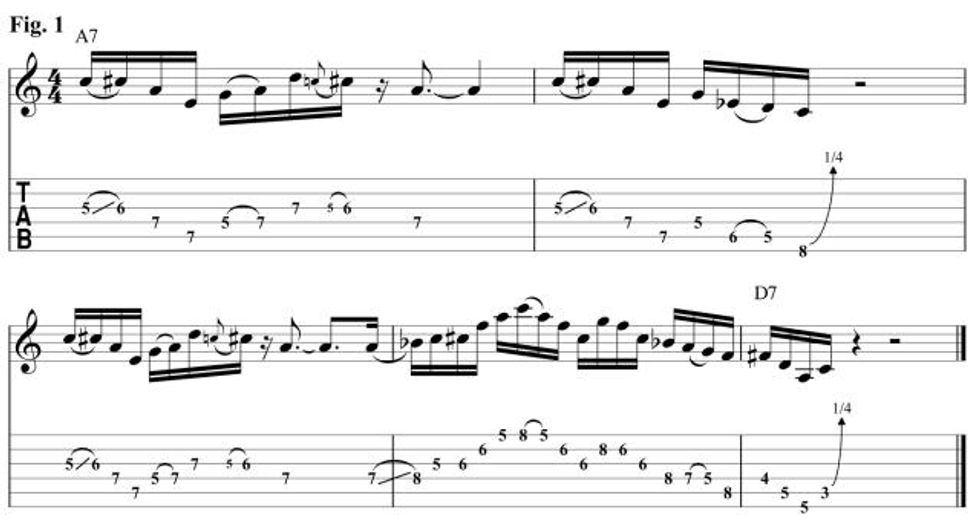

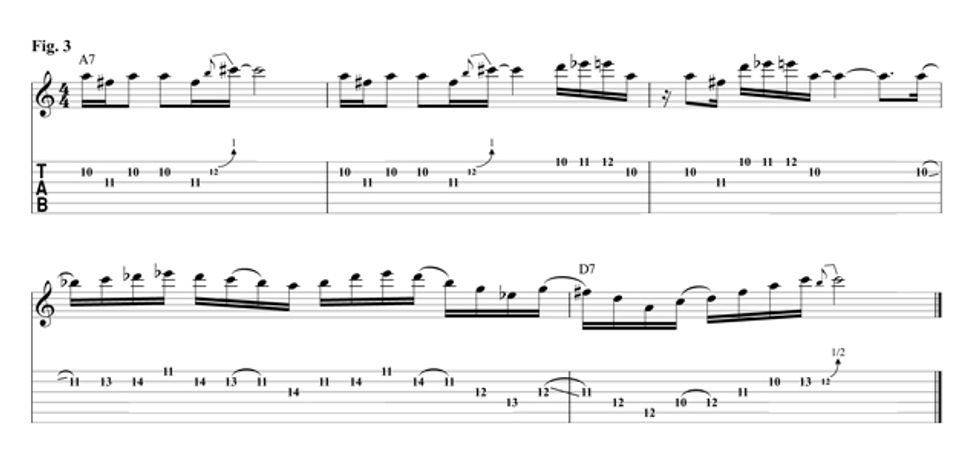
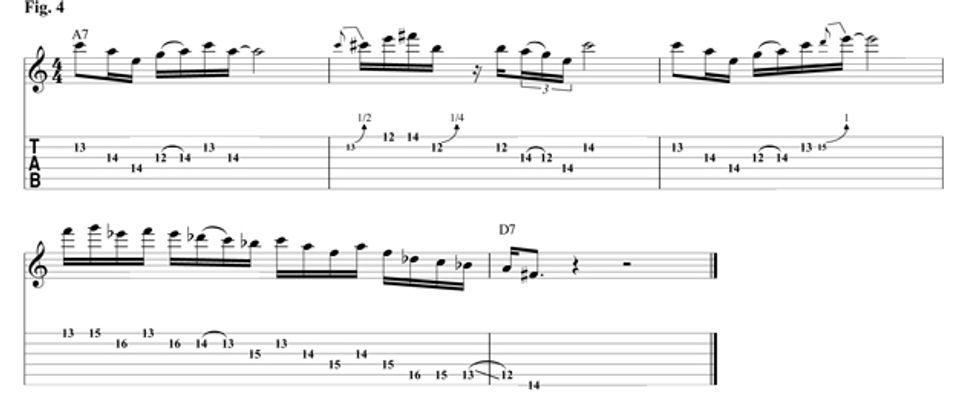
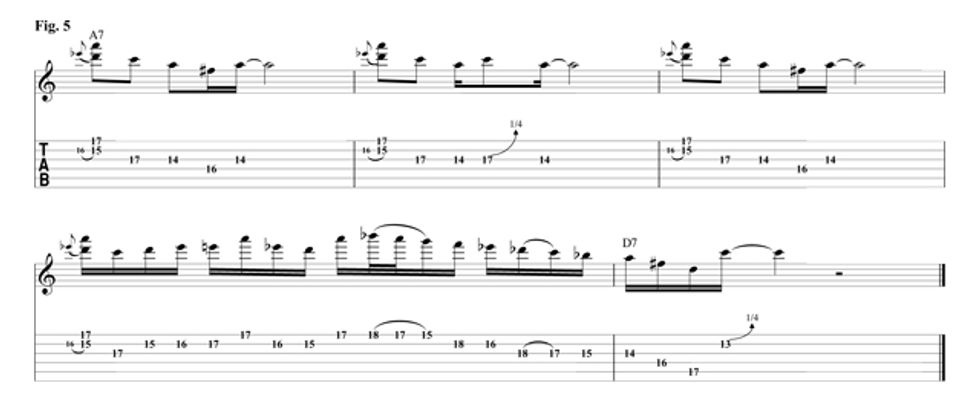




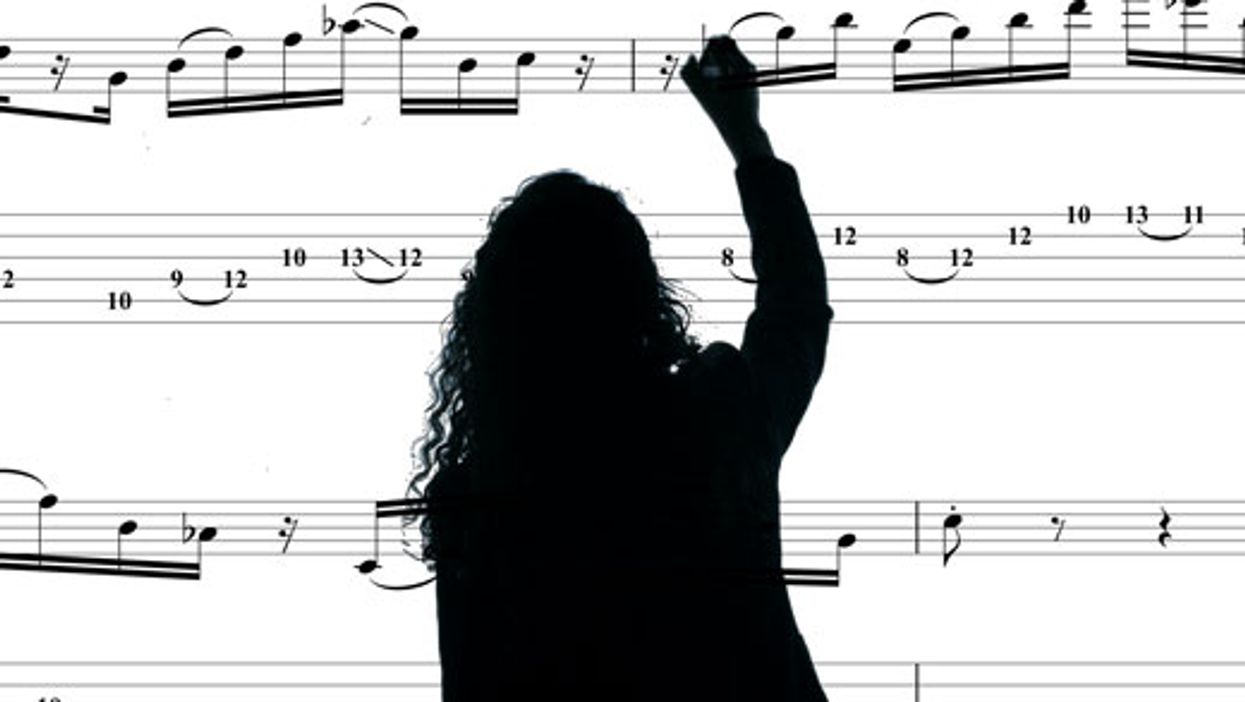

![Devon Eisenbarger [Katy Perry] Rig Rundown](https://www.premierguitar.com/media-library/youtube.jpg?id=61774583&width=1245&height=700&quality=70&coordinates=0%2C0%2C0%2C0)








